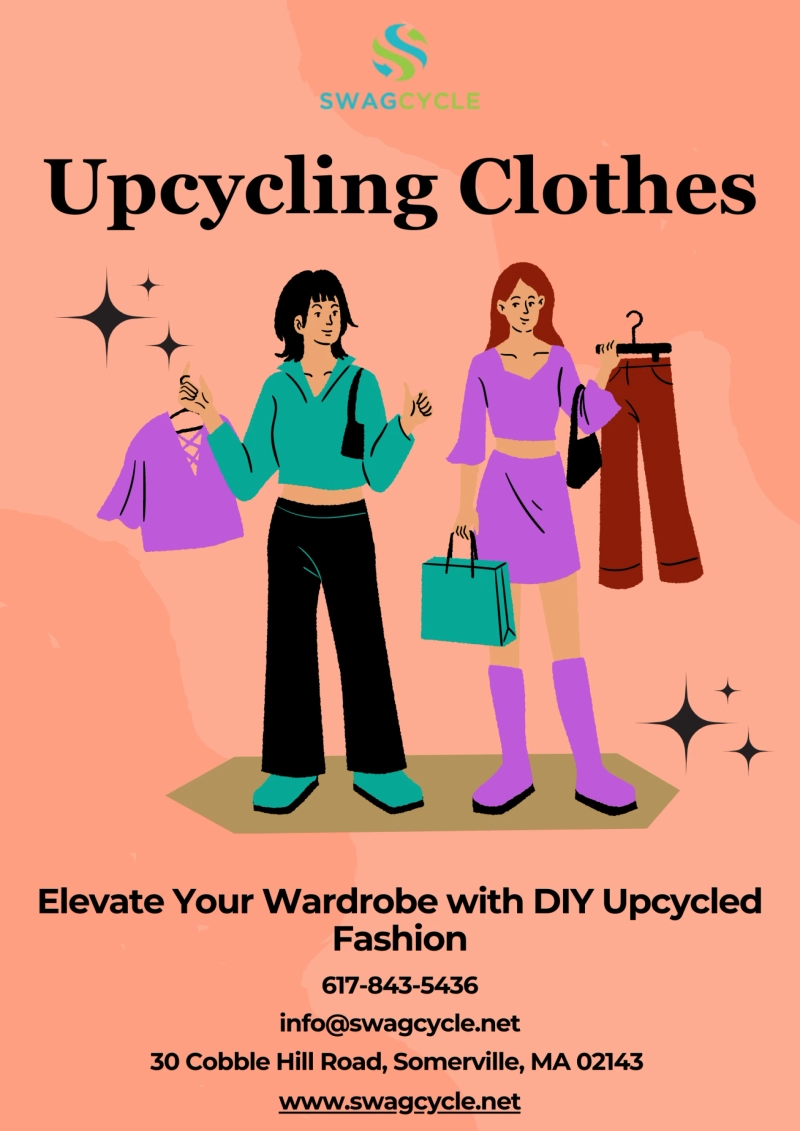In an era where environmental consciousness is gaining prominence, the concept of upcycling clothes has emerged as a creative and impactful solution to address the unsustainable nature of fast fashion. Upcycling is more than just a trendy buzzword; it's a transformative practice that repurposes and revitalizes old, worn-out garments, breathing new life into them. This article delves into the art of upcycling clothes, its benefits, techniques, and its role in creating a more sustainable and ethical fashion industry.
Understanding Upcycling
Upcycling is the process of taking discarded, outdated, or damaged clothing items and transforming them into new pieces with improved quality or functionality. Unlike recycling, which involves breaking down materials to create new ones, upcycling involves creative redesign and repurposing without degrading the original material. This concept aligns perfectly with the principles of the circular economy, where resources are kept in use for as long as possible.
Benefits of Upcycling Clothes
Environmental Conservation: The fashion industry is notorious for its immense carbon footprint and excessive waste generation. Upcycling helps reduce the demand for new textiles, conserving natural resources and decreasing the energy required for production.
Waste Reduction: By preventing old clothes from ending up in landfills, upcycling contributes to reducing textile waste and its associated environmental impact.
Unique and Personalized Fashion: Upcycling encourages individuality and creativity, as each piece is unique and often tailor-made to suit the creator's or wearer's preferences.
Preserving Culture and Tradition: Some upcycling techniques, such as patchwork or embroidery, can preserve cultural traditions and heritage through clothing.
Economic Savings: Upcycling can be a cost-effective alternative to buying new clothes. By repurposing existing items, consumers can save money and still enjoy stylish and functional clothing.
Upcycling Techniques
Patchwork: Patchwork involves combining different fabric pieces to create a new design. This technique can turn a worn-out garment into a colorful, textured masterpiece.
Embroidery and Appliqué: Embroidery and appliqué can breathe new life into plain or faded fabrics by adding intricate designs or fabric overlays.
Dyeing and Printing: Changing the color or adding new patterns through dyeing or printing can give clothes a fresh, contemporary look.
Cut and Sew: By altering the shape and structure of a garment, creative designers can give it an entirely new form or function.
Accessory Creation: Buttons, zippers, and other embellishments salvaged from old clothes can be repurposed to create unique accessories.
Embracing Upcycled Fashion
DIY Culture: Upcycling has gained popularity in DIY communities, where individuals learn and practice creative techniques to transform their wardrobes.
Local Artisans and Designers: Many independent designers and artisans are incorporating upcycled materials into their collections, offering consumers unique, sustainable fashion options.
Fashion Brands: Some mainstream fashion brands are incorporating upcycled materials into their designs, showcasing the growing demand for eco-friendly options.
Conclusion
Upcycling clothes is a powerful tool in the movement toward sustainable fashion. It not only reduces waste and conserves resources but also encourages creativity, individuality, and a connection to our clothing. As consumers become more conscious of their environmental impact, upcycled fashion provides a tangible way to contribute to a more sustainable future while embracing style and innovation. By incorporating upcycled pieces into our wardrobes and supporting brands and artisans who prioritize these practices, we can collectively drive positive change in the fashion industry.


